One
DOWNTOWN

This is the earliest-known map of Amsterdam. It was created shortly after the name was changed from Veddersburg and shows the beginning of the village along the banks of the North Chuctanunda Creek where it joins the Mohawk River. (Courtesy of Montgomery County Department of History and Archives.)
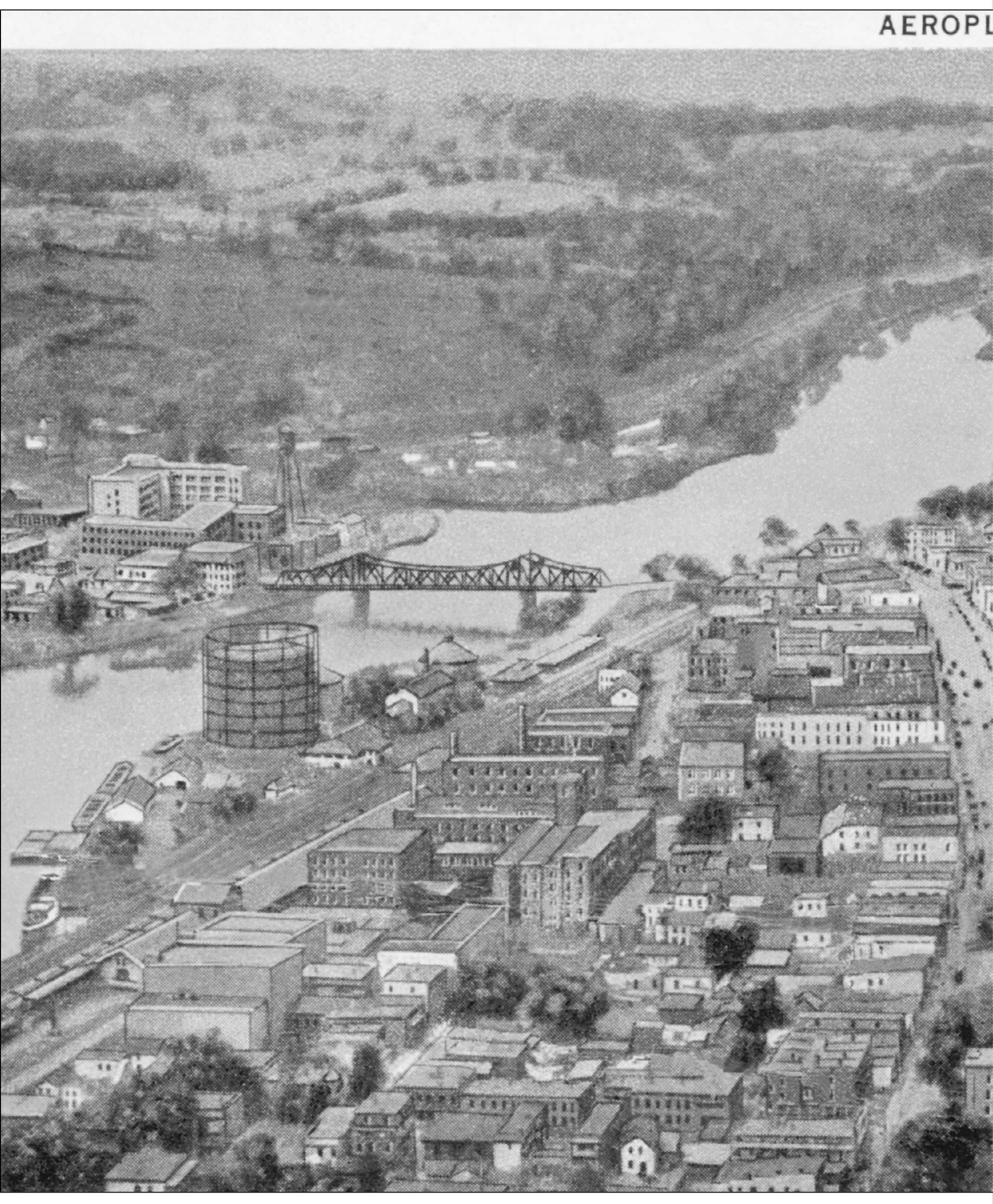

The focal point of this view is the 1916 bridge over the Mohawk River. To the south of the bridge is the Chalmers Mill (1913–1916), and to the east on the north bank is the gas works. The dense, urban fabric depicted in this photograph was ripped apart by urban renewal and arterial construction in the late 1960s and early 1970s. Over 400 buildings (approximately 100 from the 19th century) in the center of this picture were destroyed and replaced with modern structures and roadways, completely altering the nature of the city.

Above, the Hotel Conrad (as it was more commonly called) sat on the western edge of the traditional downtown area. Below, the hotel was built in 1910 on either side of the Old Voorhees Homestead, which had been the Roseboom Tavern, Amsterdam’s first stagecoach stop in 1790. Later the building housed Wil-Ton Bowling. The buildings were torn down to make room for arterial construction.
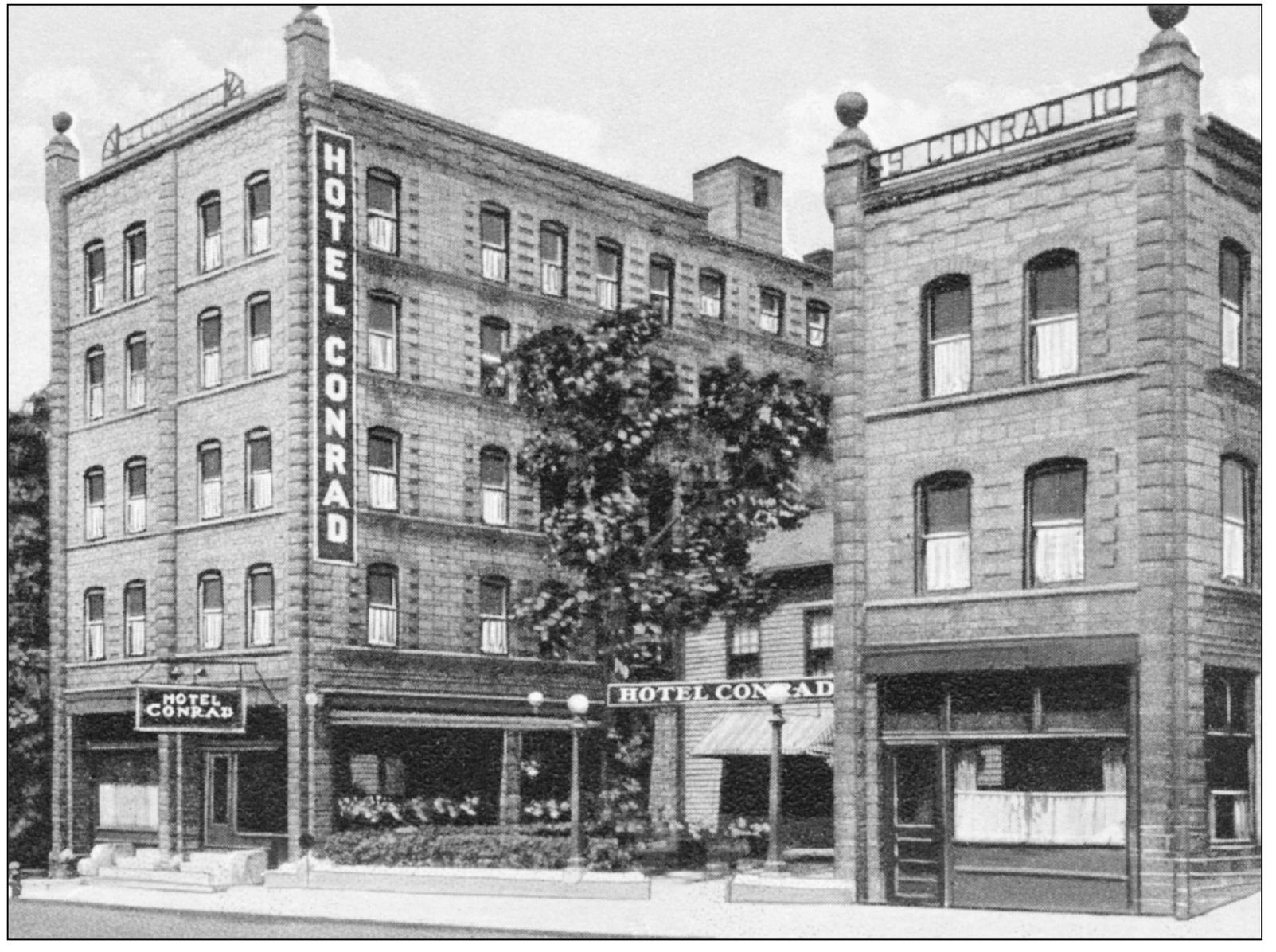

Here are north and south views from the heart of downtown at the intersection of Bridge, Main, and Market Streets. The above view looks to the south across the railroad tracks and onto the bridge over the Mohawk River. The view at right looks north up Market Street towards Market Hill and the high ground that runs parallel to the river.
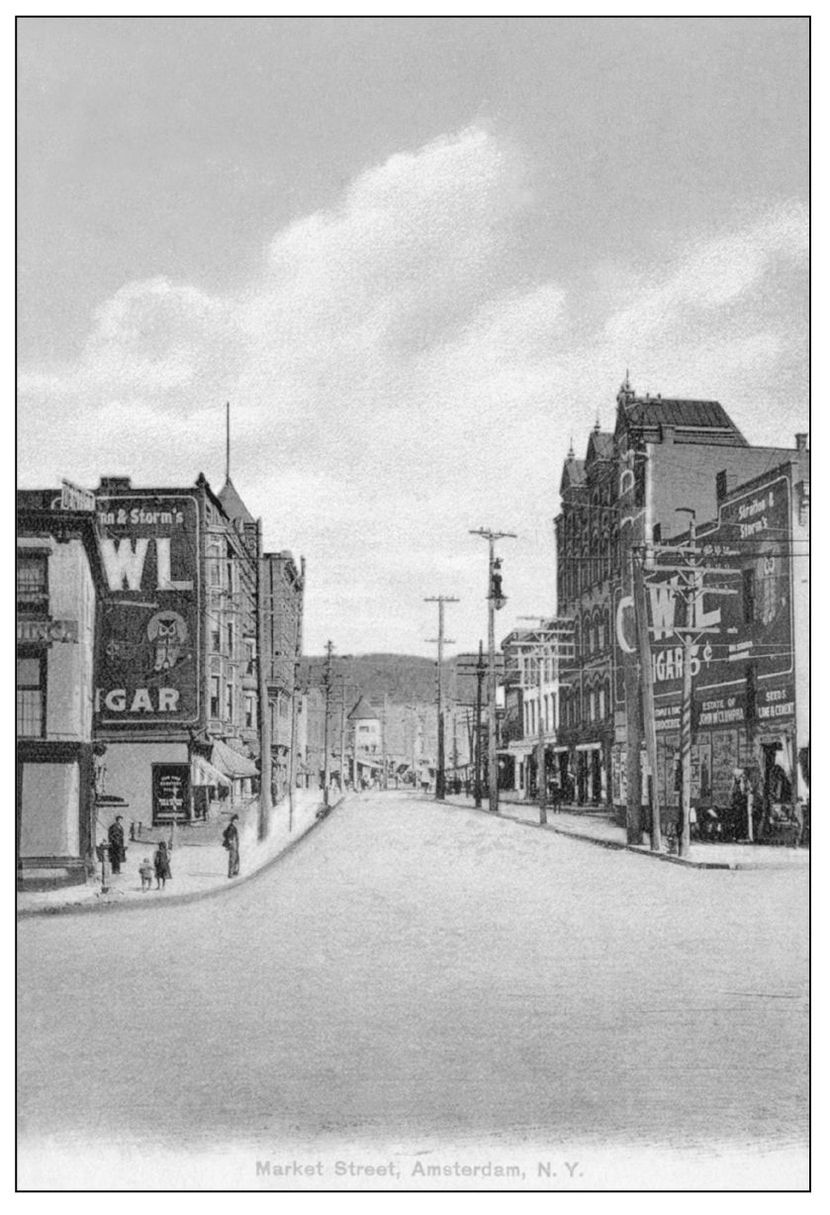
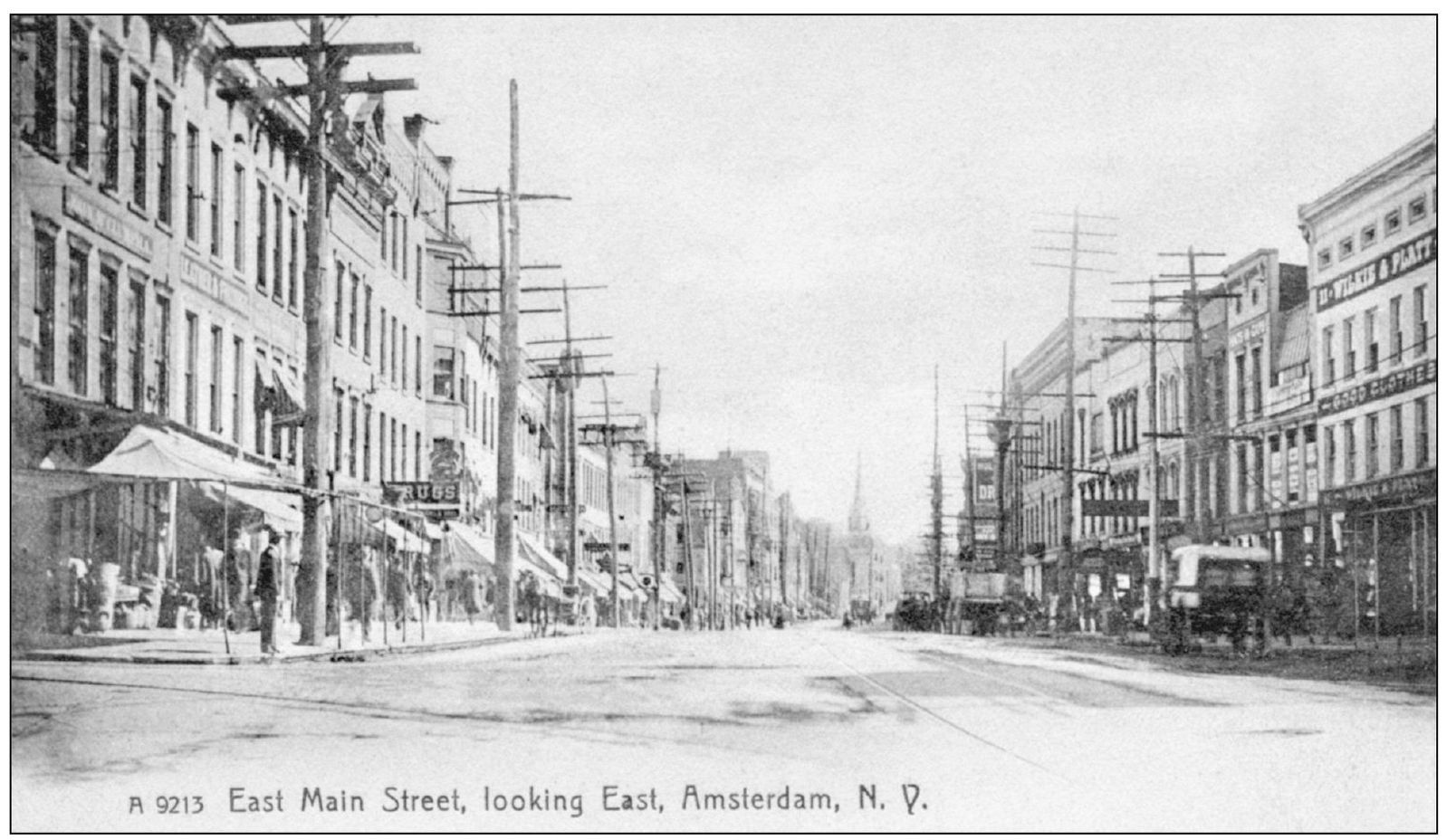
Looking east from Market Street, the spire of St. Mary’s Roman Catholic Church is visible in the center background. At far right is a portion of the Willkie and Platt clothing store. Utility poles line both sides of the street. The electrification of downtown began in December 1887. Slightly over a year later, the great blizzard of 1888 demonstrated that overhead wiring was not a permanent solution in Upstate New York.

This photograph was taken from same location as above several decades later. The clothing goods store has expanded its facade and the utility poles are gone. At right center, the bank building, Amsterdam’s modern high-rise office structure, now straddles the Chuctanunda Creek where the Morris Hall building was destroyed by a spectacular fire on January 16, 1927. Constructed in 1929, it still dominates the few blocks of this portion of Main Street that escaped urban renewal.

The Willkie and Platt department store at 7–11 East Main Street is shown before the expansion of its storefront. Illustrations of this block from 1897 show it as Quiri and Willkie, the original firm name. The three- or four-story block building became the downtown norm, arising first in the oldest part of town and replacing earlier one- or two-story commercial buildings and commercialized residences.

This view, taken farther to the east, shows a number of buildings that managed to escape urban renewal and are now a section of modern East Main Street. Halfway down the left-hand side of the street is the old First National Bank building, a reference for later images. The circular devices at the top of the utility poles spread wires to individual buildings; the wires may have been removed from the photograph when the card’s original image was colorized (see page 16).

Originally the Globe Hotel, this building, located on the northeast corner of Main and Chuctanunda Streets, was a stage house on the old Mohawk Turnpike. In 1839, it became the Amsterdam Female Seminary, which provided dormitory rooming for female students and a coeducational program by day. After the school moved to new quarters and expanded its charter, the old building was torn down in the 1860s.

The First National Bank was organized in 1860, federally chartered in 1865, and occupied the former site of the Globe Hotel. The bank used the lower stories, and the upper stories served various purposes, including housing the YMCA at one time. All of the buildings on the second (lower right) block were destroyed to create the new Route 30 arterial and the Amsterdam Mall. Many of the buildings of the closest block (including the bank building) still exist.

Above, the old firehouse, built in 1839 for a volunteer company, is seen at left center between the Chuctanunda Creek and Chuctanunda Street. To the right in this image, the former Globe Hotel is being demolished. The activity in the foreground appears to be the construction of the culvert, which would carry the creek under Main Street and the rail tracks to the Mohawk. At the top center on Market Street is a house with a cupola, which was the home of mill founder William Greene. In the image to the right is the old firehouse as it appeared after being modified and expanded in the 1890s. The tower was added to permit the hanging of fire hoses to dry out between uses to avoid mildew and rot. After the fire department moved to its new central station (see page 69), this became the police headquarters until the new public safety building opened in 1974.
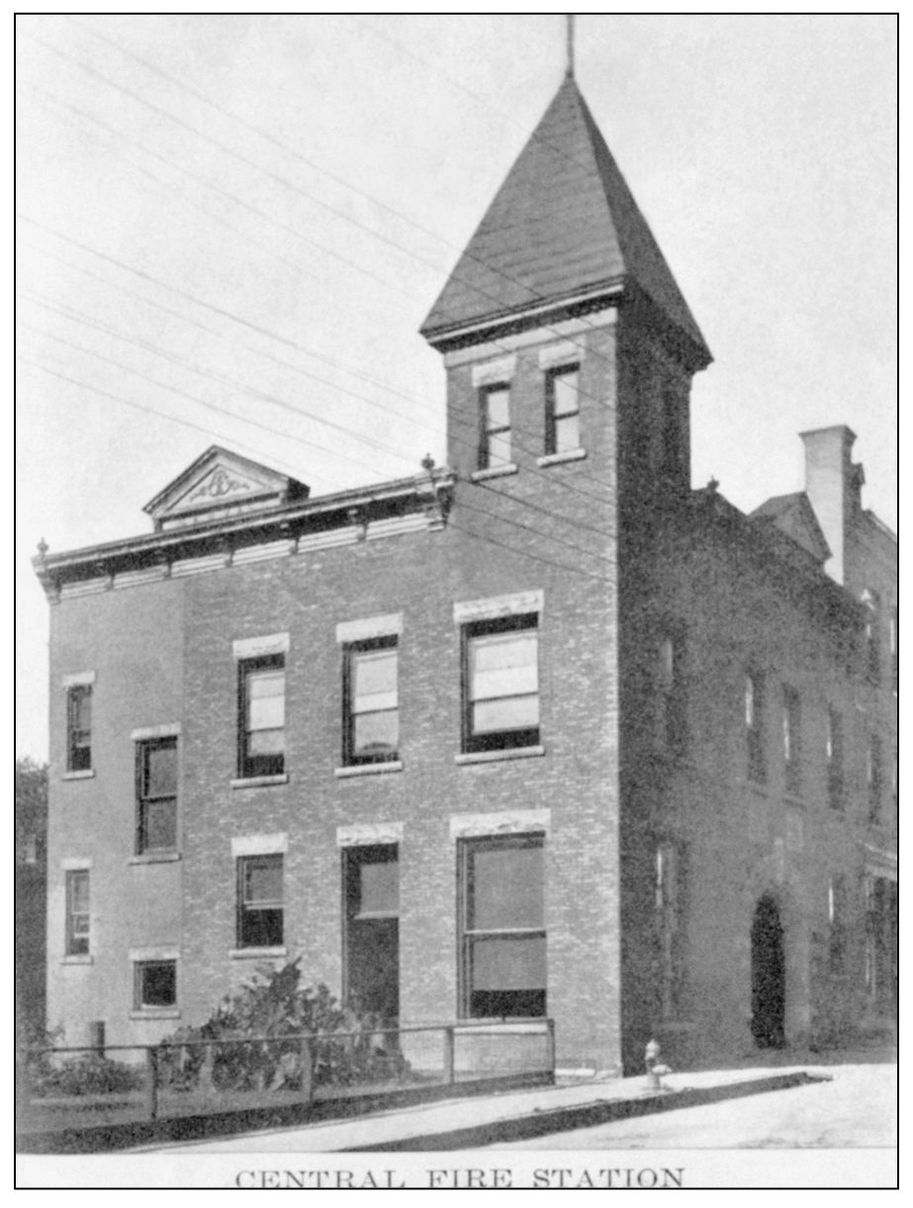
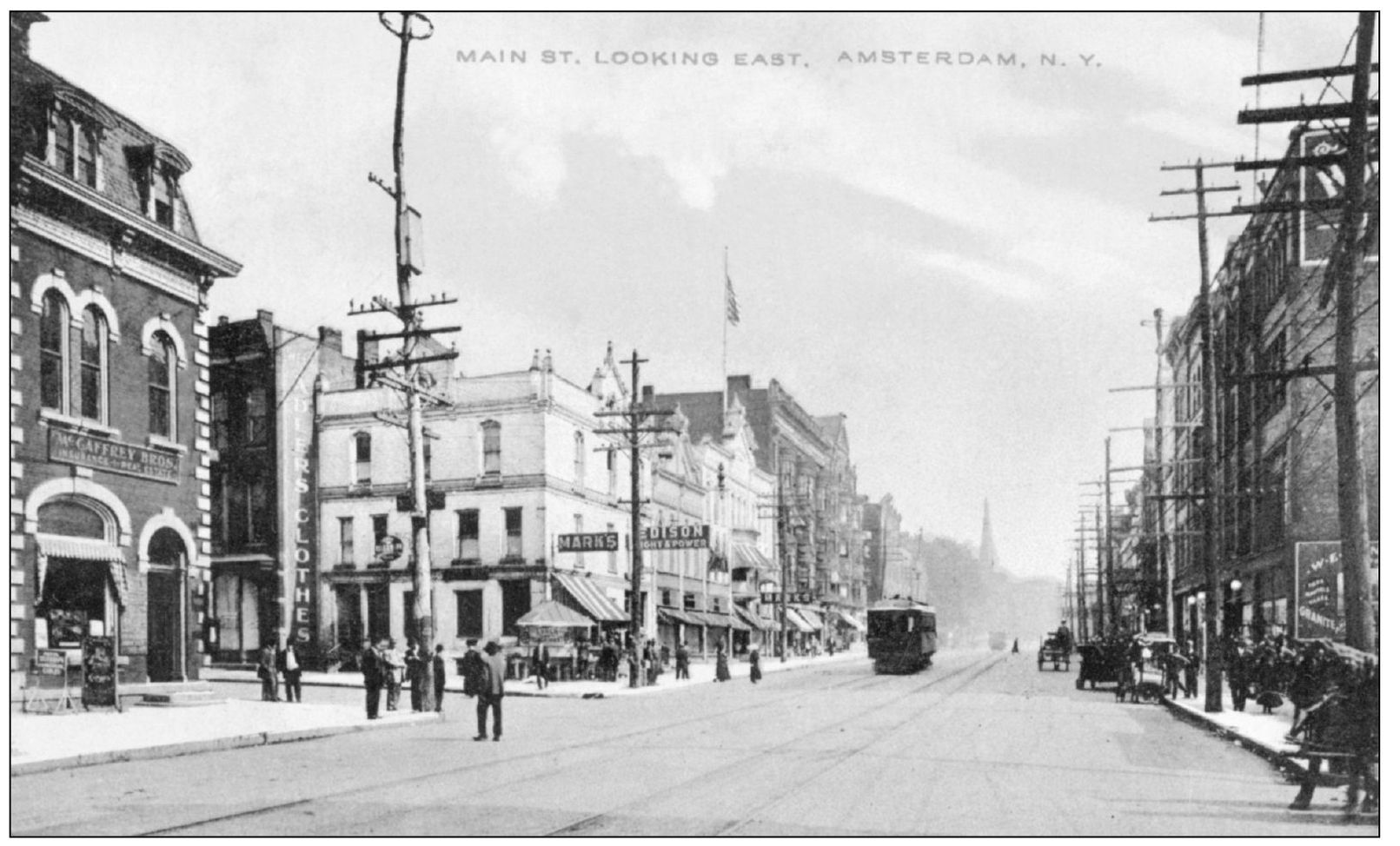
These views are from essentially the same point and roughly the same time. Above at right is the McCaffery Brothers building, which housed Amsterdam’s first telephone and telegraph exchange. Farther left in the same picture and at the right in the one below is the Reynolds business school; the post office was located here in the 1890s, and later it was the waiting room for the Fonda, Johnstown and Gloversville interurban trolley service. At center in the photograph below, the building with the large painted advertisement is the Behr Block, which housed the local National Guard company before the armory was built. City trolley service originated in 1873 with the founding of the Amsterdam and Rockton Street Railway, which was later known as the Amsterdam Street Railroad Company, and absorbed into the Fonda, Johnstown and Gloversville in 1901.
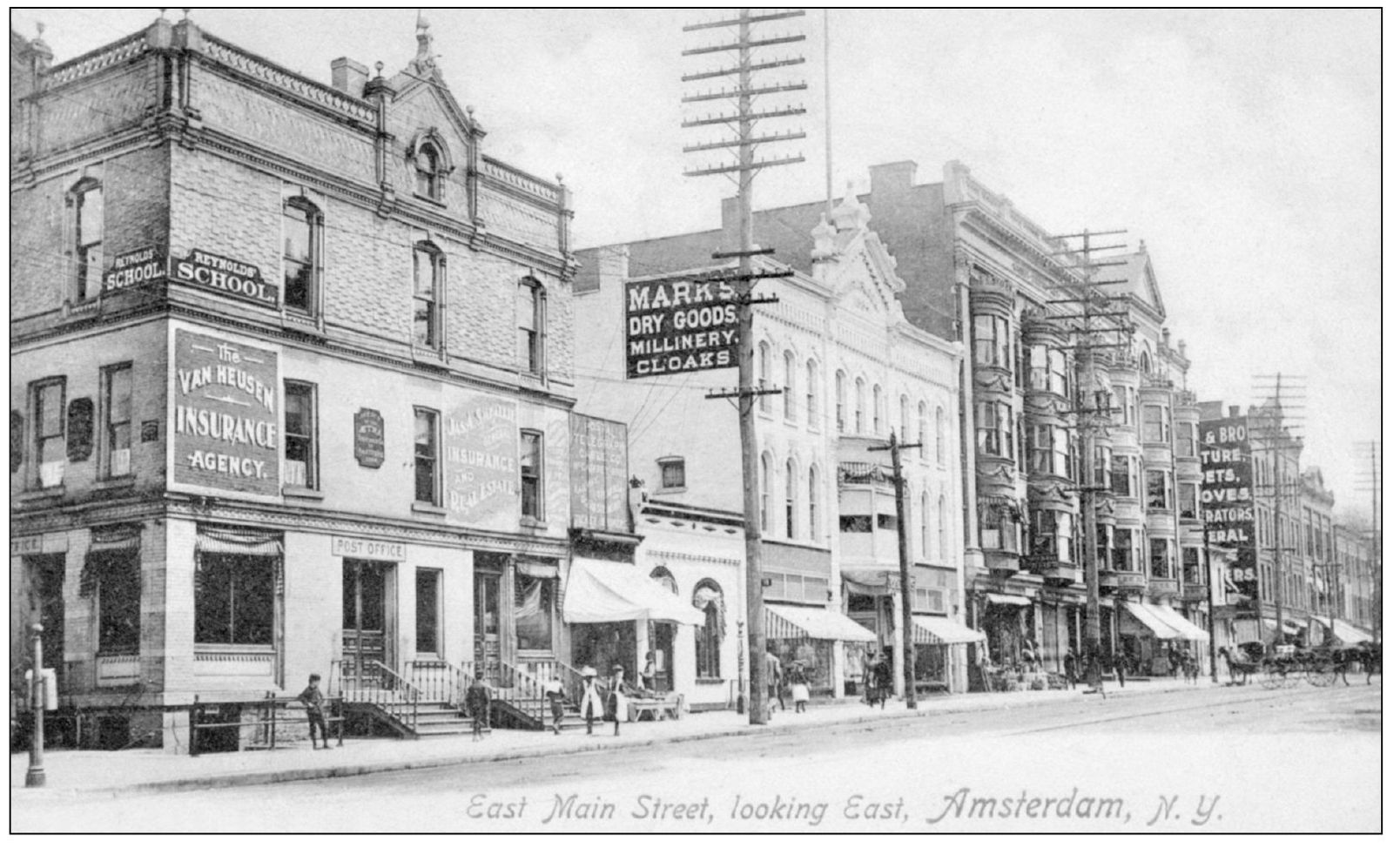

In these two views, the perspective is to the west, with the Hotel Conrad in the distance. Railroad Street is to the left in both frames, and Chuctanunda Street is halfway down the right side. Amsterdam’s first bank was the Farmers Bank, organized in 1839. After a series of locations, the bank constructed its own building in 1875; it is seen on the far left and still stands. The First National Bank (the reorganized Bank of Amsterdam) constructed its own building, which is the prominent overhang on the right on the corner of Chuctanunda Street.

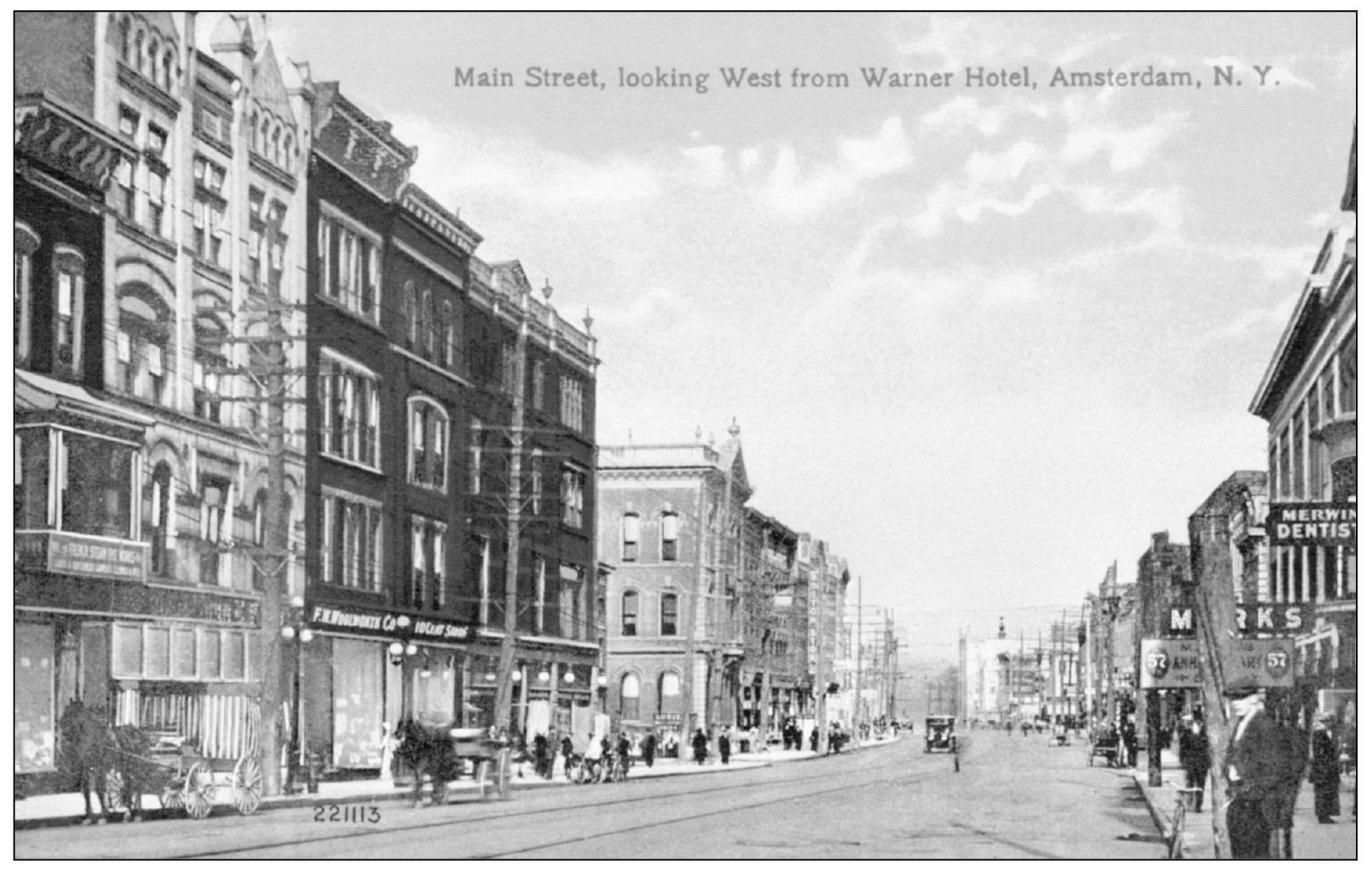
In the above picture, the perspective has moved back, with the bank building at the far left in the last picture now in the left middle at the intersection. The picture below show the area further east along Main Street to just short of where the Hotel Warner was later built. For reference, the Cassidy Blocks (c. 1890) appear on the right-hand side of the pictures below on both this page and the next. Standing in this position today, one would be inside the downtown mall. In some of these downtown views, the streets are paved, but in others they are not. For example, East Main Street was bricked in 1891 while West Main Street was not paved until 1911.


Amsterdam volunteer firemen fight a fire in the Arnold Block building on February 3, 1897. Over $75,000 in damage was suffered by the store, offices, and flats in this block, the Parr Block to the west, and the Yund Block to the east. The fire was covered in the New York Times the next day.
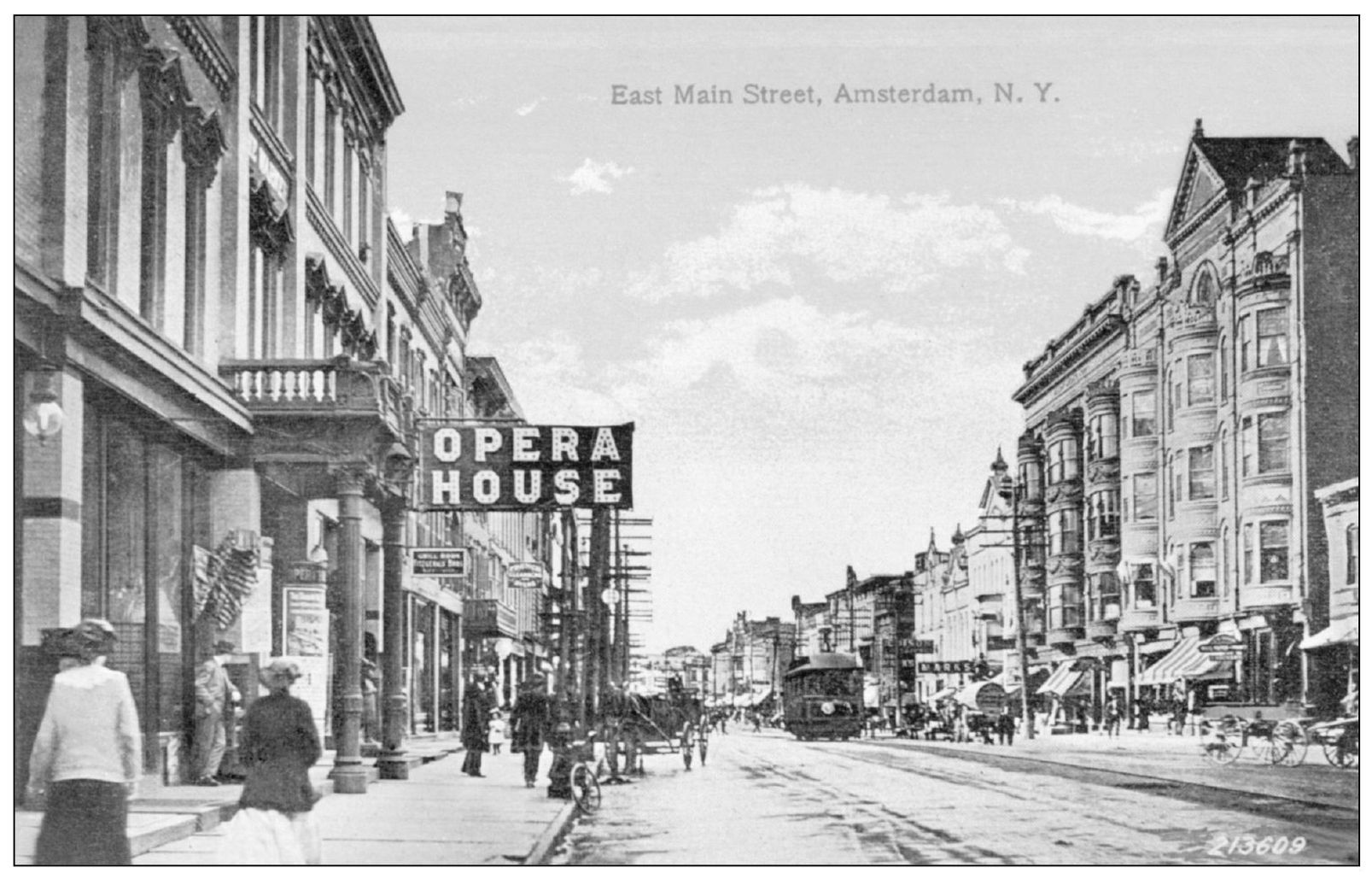
Amsterdam’s East Main Street Opera House was actually a playhouse that featured the likes of concerts by John Phillip Sousa, exhibition boxing by John L. Sullivan, and oratory by William Jennings Bryan. Although the opera house was actually located at the rear of the Hotel Warner, the sign and entrance for it were located at the front of the hotel on East Main Street. Access was through a long arcade that ran through the hotel.
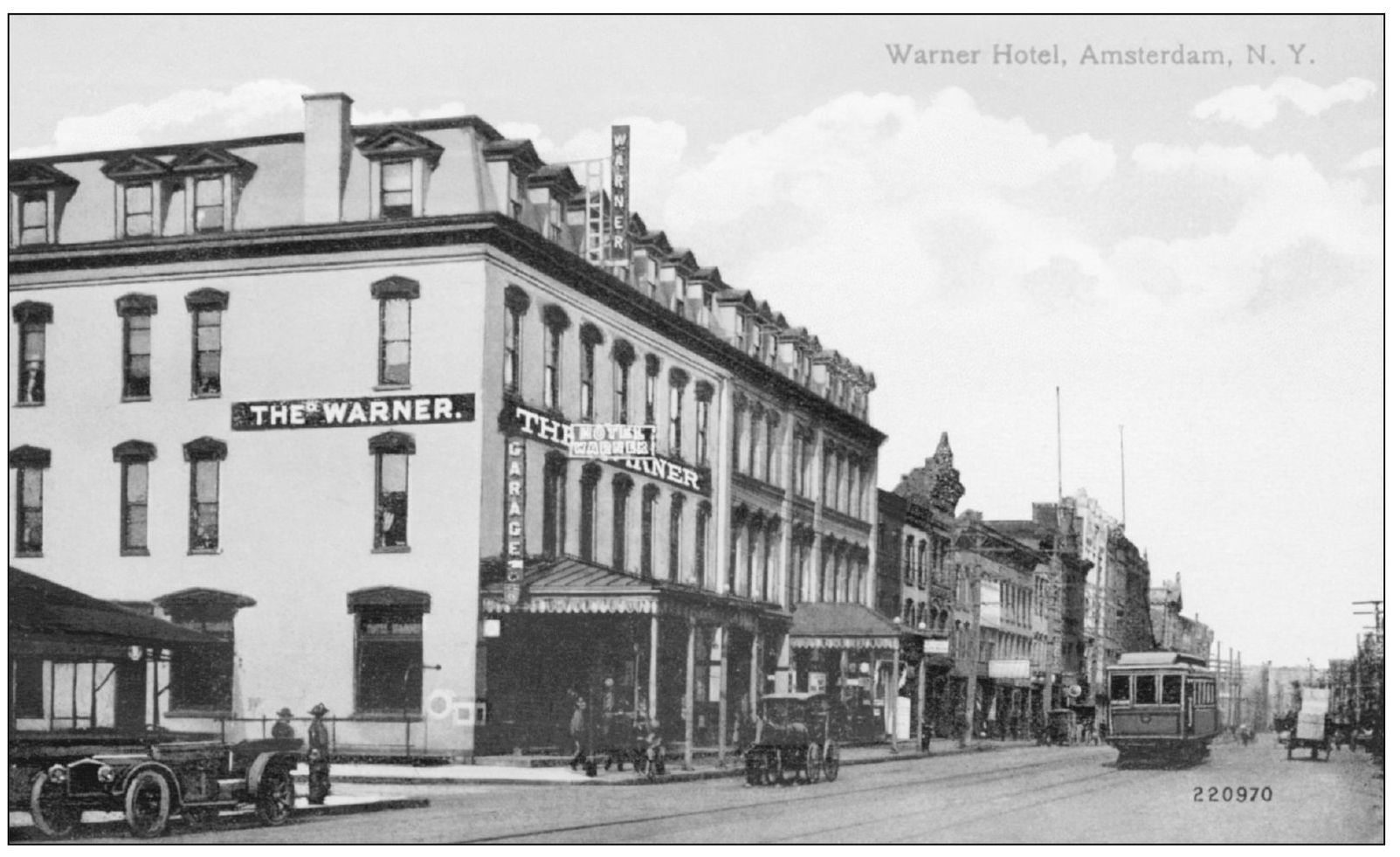
The Hotel Warner was the first large, modern hotel in Amsterdam, built in 1882 on the corner of Walnut and East Main Streets. An advertisement for the Warner from 1897 states its “cuisine equals any $2 hotel in the state.” With 76 rooms, telephones, and electric lighting, the hotel was profitable enough that a fourth story was added in 1902. During the 1930s, the hotel was renamed the Hotel Amsterdam.

The license plate on the first car dates this photograph to 1934 or 1935. Part of the Hotel Warner is now Lurie’s Department Store, famous to Amsterdam children of all ages for the pneumatic messenger system that whooshed payments from the cashiers to the central office.

A banner promoting the election of Theodore Roosevelt flies above Market Street near Republican Party headquarters. Whether the view is from his gubernatorial campaign of 1898 or presidential campaign of 1904 cannot be readily established. The absence of trolley tracks on Market Street is interesting but not significant because they were present on either campaign date and may have been eliminated during the color lithography processing of the original photograph.

This Baptist congregation was first organized in 1825 and was initially established in a brick building on Main Street. The pictured wooden clapboard church was constructed in 1842 on lower Market Street, and its tower bell served as the local fire alarm. Still later, the congregation moved into a church on Division Street, which was torn down in 1969 to create room for fixed-income housing.
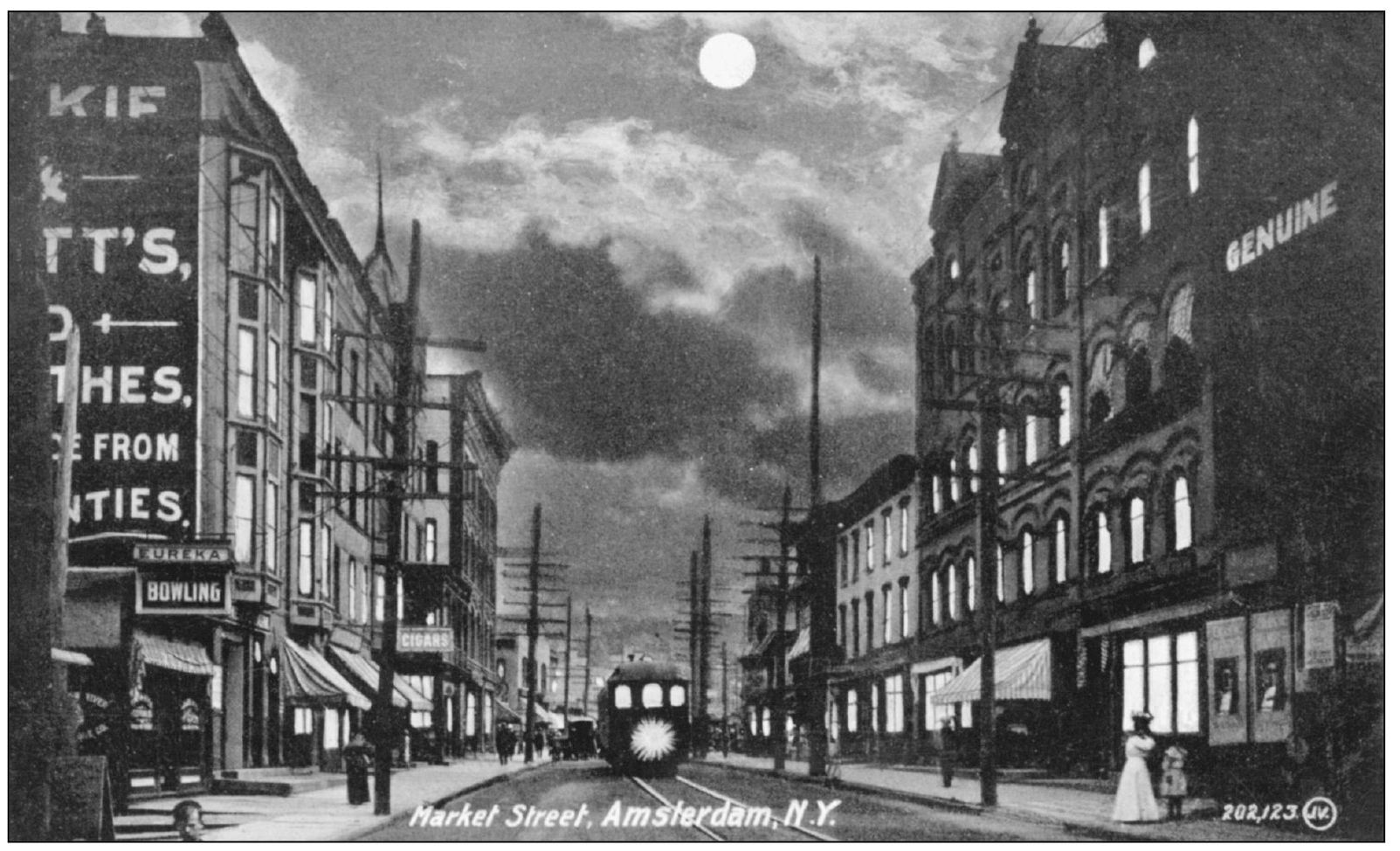
This is a night view of Market Street looking north. On the right is the Sanford Homestead building, erected in 1889. This prime location near Main Street was home to the first city hall and Board of Trade (later called the Chamber of Commerce). The Odd Figure Bazaar and Larrabee’s stores occupied the first level. Homestead referred to this site’s previous use as industrialist and developer Stephen Sanford’s boyhood home.
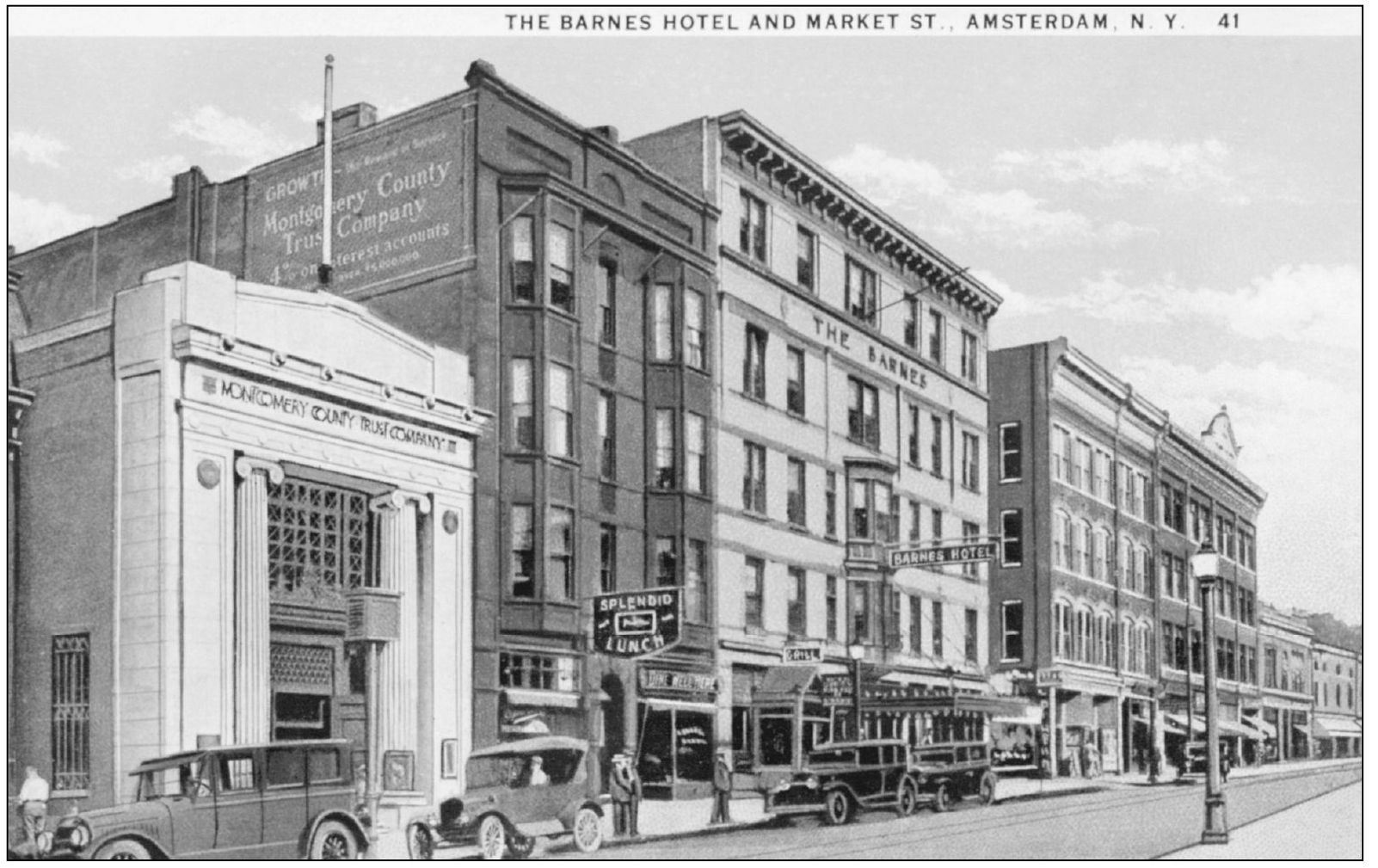
The Barnes Hotel is at center in this picture and the one above. To its left is the Rulison Block where the Splendid Lunch let its name do its advertising. This building also housed Amsterdam’s first cinema, a nickelodeon. Farther left is the Montgomery County Trust Company, established in 1912.

The Barnes Hotel was the successor to the Central Hotel and was built in 1910 as a competitor to the Hotel Warner. Business was good enough that a fourth floor was added not long afterwards. The alleyway between the buildings led to a garage. As automobile use increased, paving and repair and service facilities also increased. Dust, mud, and horse droppings diminished but so did amenities, such as trees, awnings, and wide sidewalks, as the concern shifted to providing for safe traffic lanes and parking.


Above, looking north from Main Street on the near left is the McCaffrey Brothers building, which housed the central office for the first 50 telephone lines installed in the city in 1881. Farther up on the left is where Federal Street was later cut in to provide access to the post office when it is built in 1936. At left is the insurance building where Hays and Wormuth wrote policies for more than 80 years before moving to the north limits of the city. This building was where the first common council meeting was held after Amsterdam became a city in 1885 and was also frequently used for union meetings.

The current post office building, designed by Louis Simony in a Colonial Revival style, was constructed in 1936. It is located just south of the Amsterdam Public Library. Two Treasury Department arts program murals adorn the sides of its main lobby: one is of Sir William Johnson meeting with the Mohawk Indians, and the other is an Erie Canal scene. Both were painted by H. F. Schnakenberg in 1939 and retouched by local artist Lucy Suhr in 1974.

This, the first permanent library, was opened in 1903 with a $25,000 grant from Andrew Carnegie. Two conditions were set for this grant: the library should be “open to all” and the common council had to provide maintenance funds. The first was met when the words were inscribed over the main entrance. The second was arranged after serious drinking and arm-twisting at a local tavern. The rear of the building was extended in 1980.

On the left, the Second Presbyterian Church, a wood-frame structure seen in this view from about 1865, was built on the corner of Church and Grove Streets in 1832. The second in the church’s name referred to the congregation not the building; the first Presbyterian Church in the area was established outside the village in the Town of Amsterdam at Manny’s Corners. Shown below, the 1832 structure was razed in 1869 to permit the erection of this imposing brick structure whose steeple once dominated the city skyline. The Sanford family, pioneers of the carpet business in the city, donated Tiffany windows, and the Shuttleworths, executives at Mohawk carpets, donated more modern windows, including one of Jesus blessing the mill workers. All were lost in a horrific fire in January 2000, which caught national media attention. A new, modern church building has since risen from its ashes at this location.
